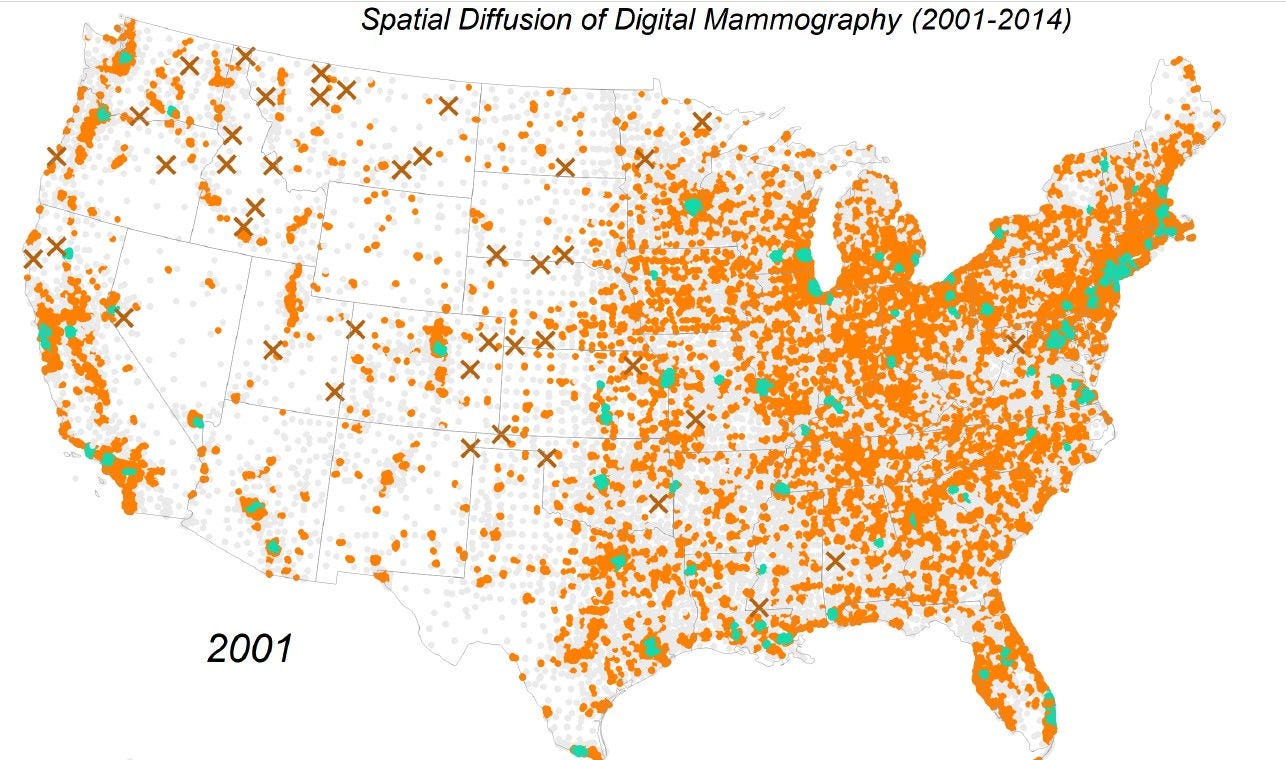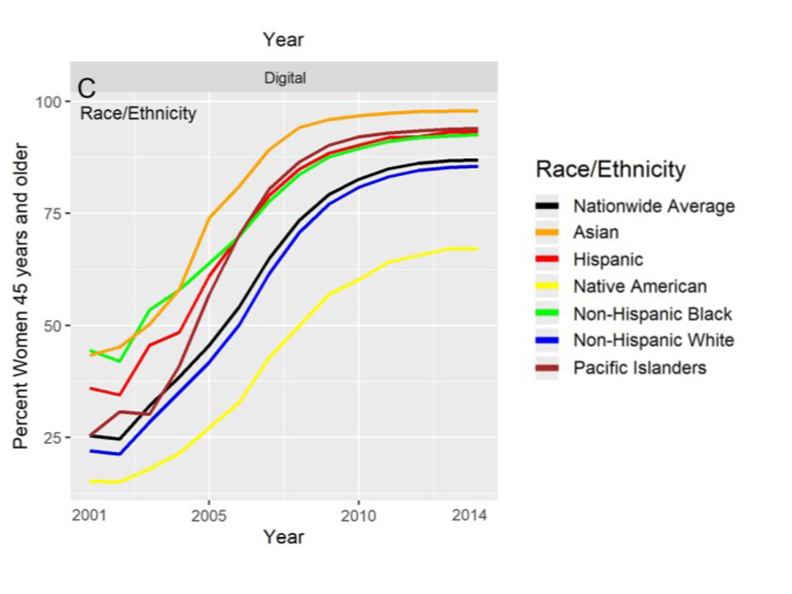Access to Digital Mammography in the US: A Study in Pictures
This animated map shows how the availability of digital mammography increased across the United States from 2001 to 2014.
The Challenge
Digital technology to screen for breast cancer became available starting in the year 2000. Compared to conventional screening with X-rays, digital mammography appears to be more accurate for screening premenopausal and perimenopausal women age 50 and younger who have dense breasts.
Women who are screened with digital mammography also have slightly less radiation exposure to each breast. Compared to the large black-and-white X-rays for conventional mammograms, mammograms in digital formats can be immediately reviewed, retaken if necessary, and be stored and shared more efficiently.
Despite the technical advantages over film, it took more than 10 years for digital mammography to become widespread. Broad coverage didn’t occur until 2015.
The Research
Examining how quickly, and where, new medical technologies get adopted can provide insights into potential disparities in health care. That’s why American Cancer Society (ACS) researchers Daniel Wiese, PhD, and Farhad Islami MD, PhD, worked with other researchers from Maine, New Jersey, New York, and Pennsylvania to study how geographically widespread digital mammography has been adopted in the United States.
This video quickly demonstrates their findings.

Play the video to see how the availability of digital mammography (the green dots) increased across the US from 2001 to 2014. The orange X’s show where digital mammography technology is available with a longer drive. Orange dots represents access to film-only mammography.
The researchers evaluated digital mammography availability by population density, rural/urban residence, and race/ethnicity. Here are some of their key findings:
- Adoption of digital mammography advanced first in densely populated areas and last in rural areas.
- The proportion of digital mammography units increased from 1.4% in 2001 to 94.6% in 2014.
- In 2014, approximately 87% of women ages 45 and older had access to digital mammography
- Throughout the study period, Native American women and those living in rural areas had the lowest geographical access.
Availability of Digital Mammography Based on Race

This graph shows the availability of digital mammography based on race. The black curve is the nationwide average. Women ages 45 and older in Asian (orange), Pacific Islander (brown), Hispanic (red), and Black (green) populations all had better access than the nationwide average. Women in White (blue) and Native American (yellow) populations consistently had poorer access than the national average.
Why It Matters
The authors say that the poor access to mammography for Native American women could be a result of chronically underfunded Indian Health Services, a major health provider for many rural regions and reservations, which often has limited cancer screening services. Other reasons adoption of the new technology was slow, the authors say, could have been due to individual management and planning decisions, budget availability, and lack of incentives.
Further studies are needed to identify effective strategies to increase accessibility to digital mammography.
- Related resources
- For researchers


